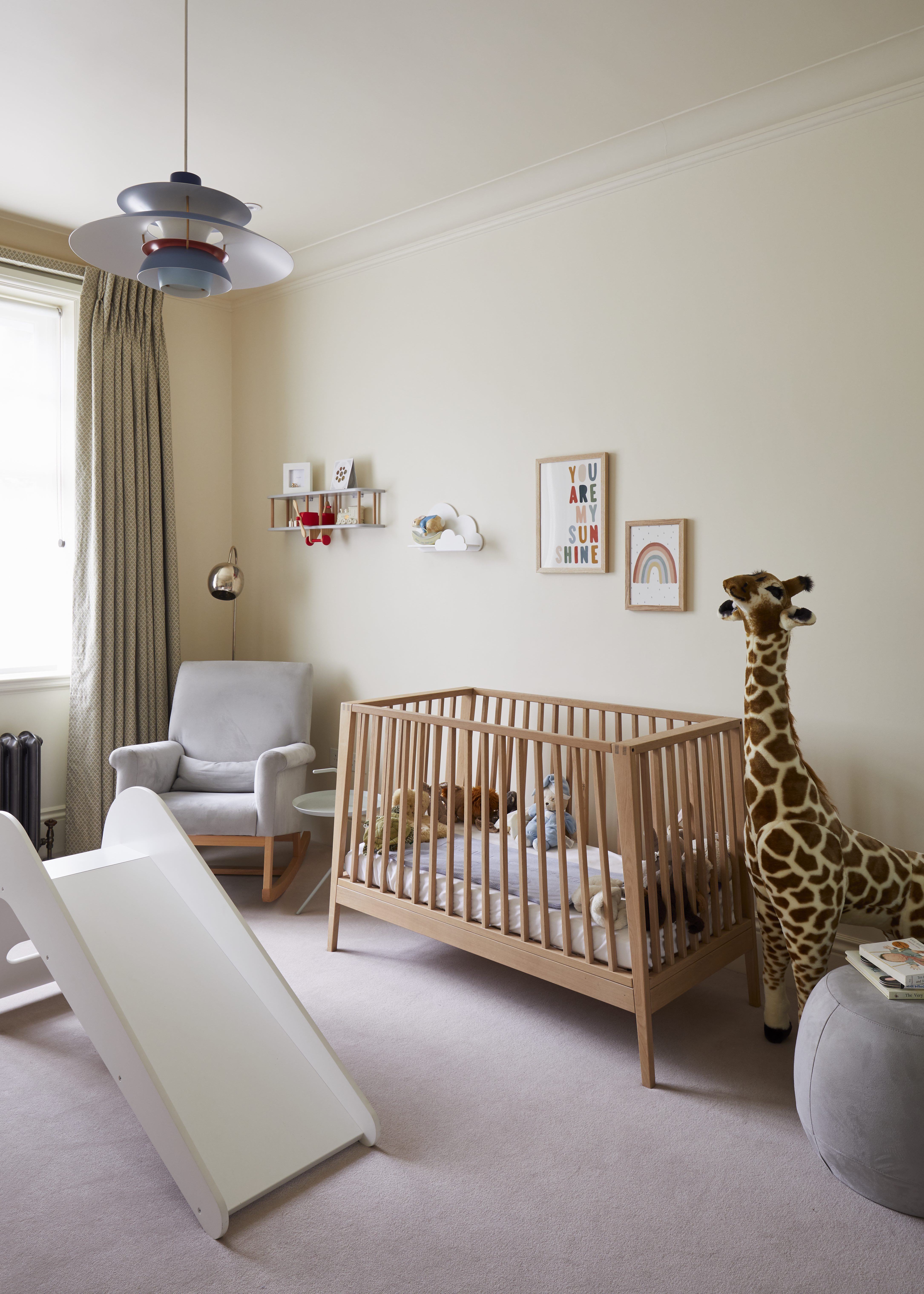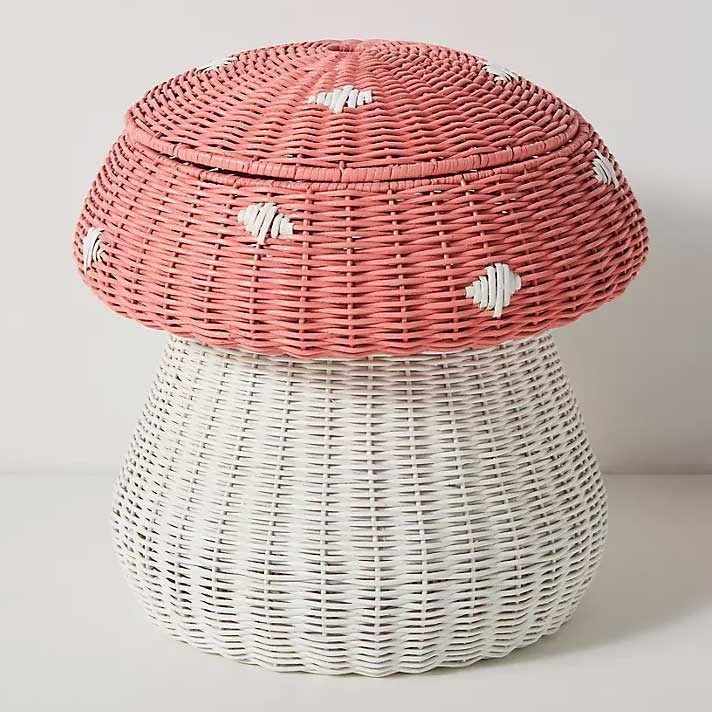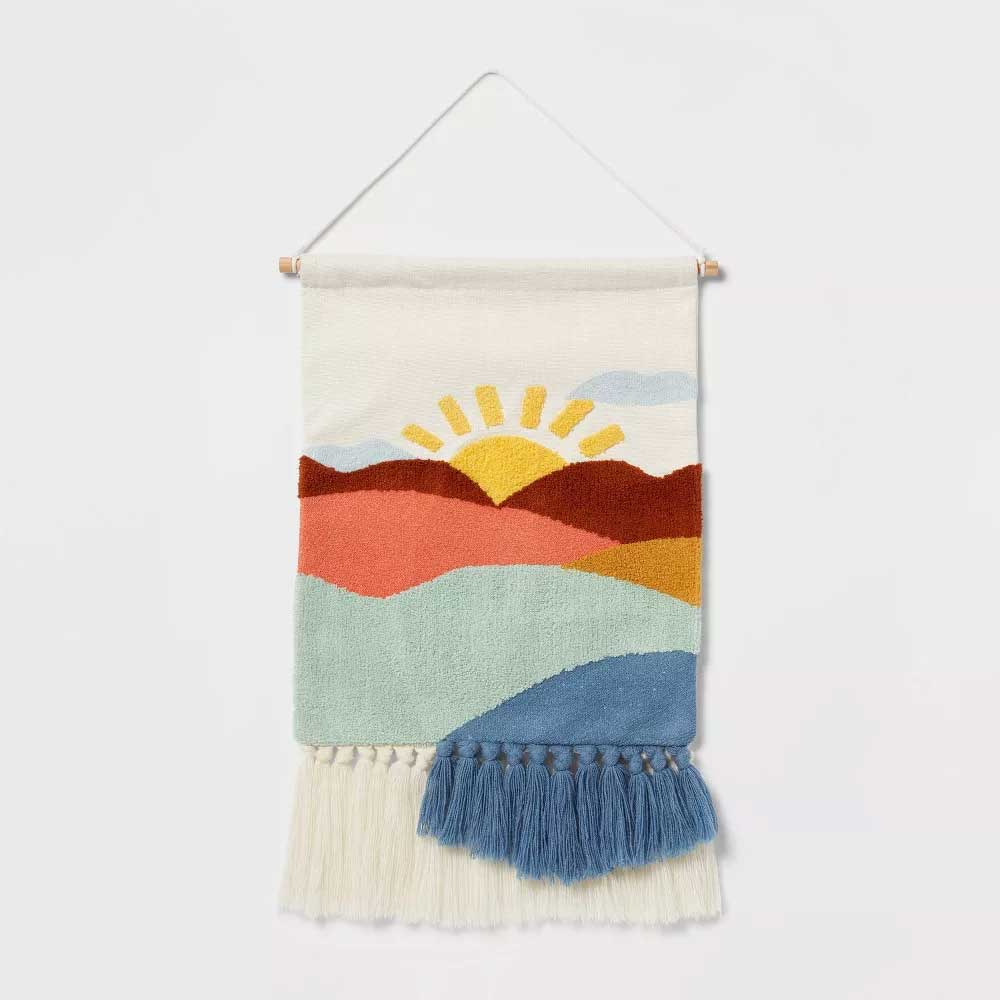Is it actually okay to have an all-neutral nursery? Here's what a psychologist says about the viral "sad beige baby" trend
The "sad beige baby" trend is calling out parents who go all-in for neutrals for their children's nurseries, but is there really any harm? We ask an expert


If you're a social scroller, you might have come across some "sad beige baby" content online in recent months. It's a viral trend that's a little bit tongue-in-cheek, a little bit parent-shaming those parents who choose to decorate their child's nursery in all-beige, following a growing trend to keep kid's space a little more neutral (and in this writer's opinion a little more stylish). The suggestion is that these beige spaces aren't stimulating enough, aren't fun enough, for a nursery.
Now, let me pre-face this by saying that I'm not, actually, a parent, but I've got a little skin in the game. For each of my nieces, my partner and I have designed and decorated their nurseries as a gift to our new family members. It's something we love to do, but given we have a predilection for all things beige, you can only guess the type of nursery ideas we included in these spaces.
All of a sudden, I'm getting a little uncle guilt. Can going all-in on neutrals be such a bad thing for a nursery? To get to the bottom of whether the "sad beige baby" phenomenon is real or not, I asked Dr. Leda Kaveh, a licensed clinical psychologist and director of Washington Psychological Wellness, what she makes of the idea.
So, can your nursery color choice affect how your baby develops?

'The choice of colors in a baby's nursery can indeed have an impact on their emotional well-being and development,' Dr Leda explains. 'Colors can influence mood, behavior, and overall cognitive development in children.'
Thankfully though, it's not so black and white (and beige in this instance) when it comes to neutral nursery ideas. 'It's essential to approach this topic with a balanced perspective,' Dr Leda adds, 'as individual differences and context also play significant roles.'
So what effect does the color of a baby's environment have on their development then? Well, it turns out it can impact in a few distinct ways. 'Colors can provide sensory stimulation, which is crucial for a baby's cognitive development,' Dr Leda explains. 'Bold, vibrant colors can capture a baby's attention and foster curiosity, encouraging exploration and learning.' Ah, strike one against the all-beige nursery.
'Colors can also evoke emotional responses in both children and adults,' Dr Leda adds. 'Bright, warm colors like red and yellow may induce feelings of excitement or energy, while cooler tones like blue and green can promote a sense of tranquility.'
The Livingetc newsletters are your inside source for what’s shaping interiors now - and what’s next. Discover trend forecasts, smart style ideas, and curated shopping inspiration that brings design to life. Subscribe today and stay ahead of the curve.
The colors you choose then can be chosen to evoke the effect you want to create in a space. Excited and energetic might not be exactly what you want for somewhere your baby is sleeping, after all. But it's not quite that simple.
'It's crucial to consider that every child is unique, and their response to colors may vary,' Dr Leda continues. 'Some babies might be more sensitive to stimuli and might feel overwhelmed in a brightly-colored environment, while others may thrive in such surroundings.'
And what about beige?
But is it all doom and gloom for those of us who have bet on an all-neutral nursery theme? Well, Dr Leda doesn't think so. 'Neutral colors like beige can create a more calming and soothing environment, which might be beneficial for promoting relaxation and better sleep,' she says. 'Neutrals like beige may not elicit strong emotions but can contribute to a sense of stability and comfort.'
Again, it comes down to individuality, too. 'Some babies might find neutrals calming, while others may become disinterested or bored,' she adds.
However, it's not all just about how baby feels. You, as the parent, also have a vote to case, according to the psychologist. 'If parents feel more comfortable with neutrals, it might create a more relaxed and peaceful environment for them, which can positively impact the baby as well,' she says.
@allisonroozen I find it entertaining how quick people are to jump on moms over seemingly anything. The idea that providing a soothing environment is an act of deprivation really cracks me up.
♬ original sound - ♡ Mani_TMI ♡
What's the best approach for choosing colors for a nursery then?

On the whole, I think a neutral nursery still isn't a bad thing. However, it's worth considering adding some brighter accents, that can perhaps be brought out and stored away at different times. 'A balanced approach may be the most effective way to design a nursery,' Dr Leda agrees.' Combining both bold and neutral colors can create a visually engaging yet calming space. For example, having colorful and stimulating elements like toys, wall decorations, or crib accessories alongside a neutral base color can strike the right balance.'
Have we answered whether the "sad beige baby" is a real phenomenon, then? 'In conclusion, while colors can influence a baby's nursery environment and potentially affect their emotions and development, there's no one-size-fits-all answer,' Dr Leda states. 'It's essential to consider the individual needs and preferences of the child and the parents when designing a nursery. Creating a nurturing and supportive environment, regardless of the color palette, is of utmost importance for a child's overall well-being.'
3 color pops that won't throw off your nursery's color scheme

Hugh is Livingetc.com’s editor. With 8 years in the interiors industry under his belt, he has the nose for what people want to know about re-decorating their homes. He prides himself as an expert trend forecaster, visiting design fairs, showrooms and keeping an eye out for emerging designers to hone his eye. He joined Livingetc back in 2022 as a content editor, as a long-time reader of the print magazine, before becoming its online editor. Hugh has previously spent time as an editor for a kitchen and bathroom magazine, and has written for “hands-on” home brands such as Homebuilding & Renovating and Grand Designs magazine, so his knowledge of what it takes to create a home goes beyond the surface, too. Though not a trained interior designer, Hugh has cut his design teeth by managing several major interior design projects to date, each for private clients. He's also a keen DIYer — he's done everything from laying his own patio and building an integrated cooker hood from scratch, to undertaking plenty of creative IKEA hacks to help achieve the luxurious look he loves in design, when his budget doesn't always stretch that far.


